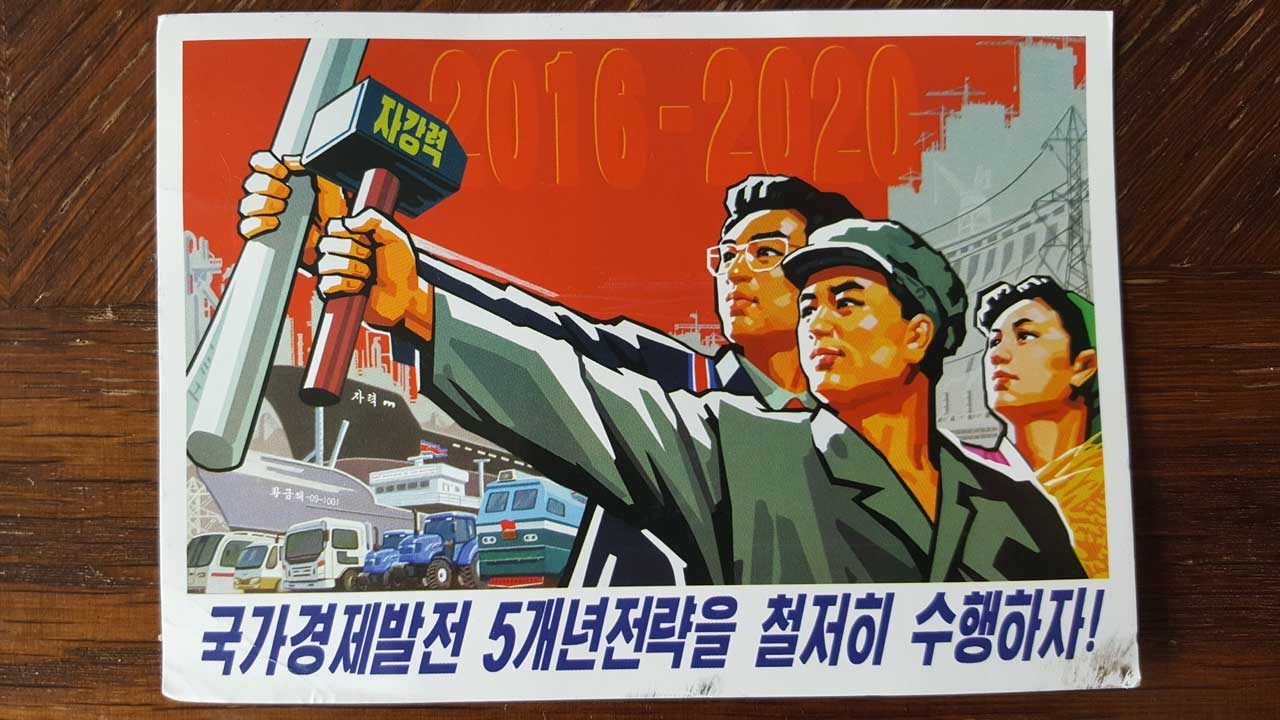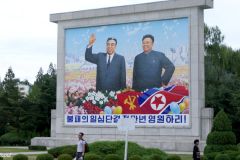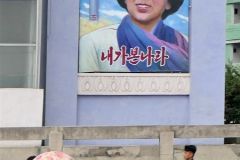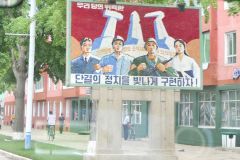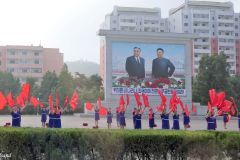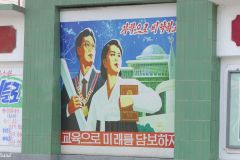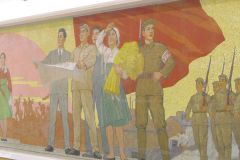In a small red booklet I bought in North Korea, “Kim Jong Un Aphorisms 1”, the young leader states that “art not related with the revolution, art for its own sake, is useless”. This point of view is reflected by the artwork presented on large roadside billboards and on postcards tourists are invited to buy.
I bought four postcards and sent home to family and friends. They arrived three weeks later. I will here present three of the postcards with my comments. Then you will find pictures of some of the large boards that would greet me and all passersby on almost every street in North Korea. I managed to photograph some of them out the car window.
Postcard no. 1: Mother and chubby son
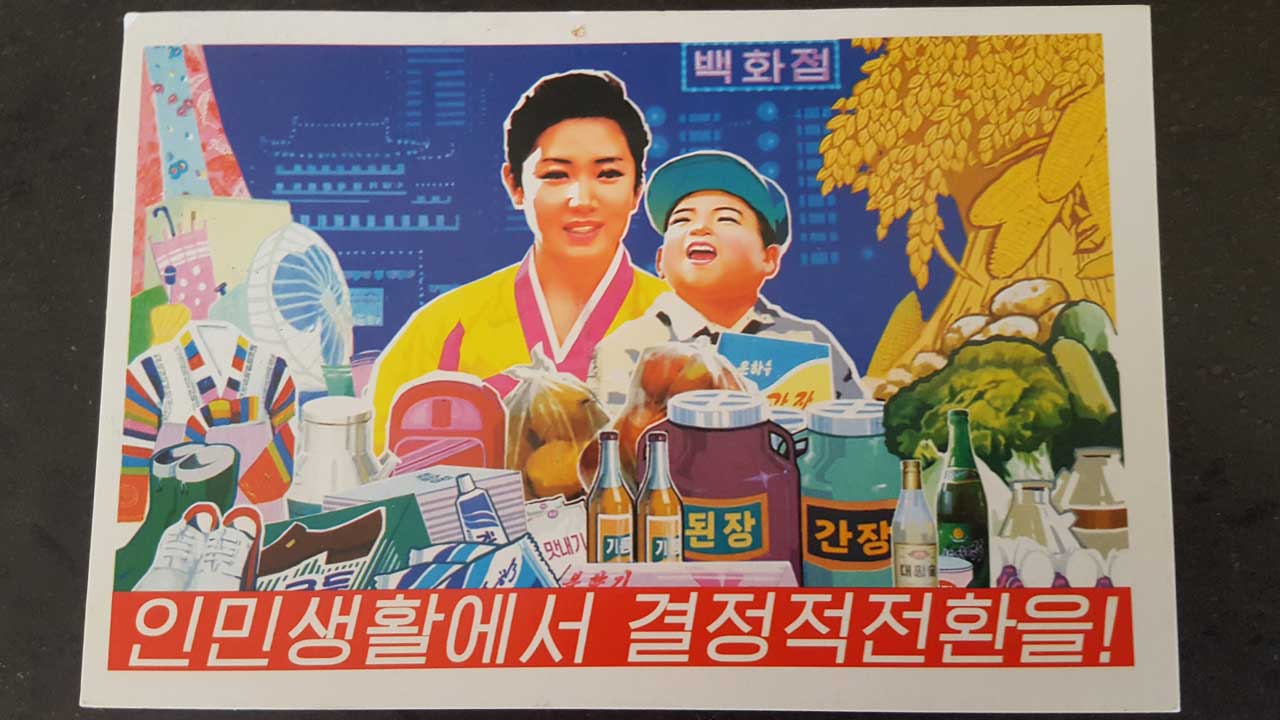
This is a great propaganda postcard. A smiling mother and her happy son are showing off all kinds of products from North Korea. For instance, there is an umbrella, running shoes, toothpaste, bottled drinks, vegetables and fruits.
In most of the museums I went, there would be female guides in traditional costumes. (In the other museums they were dressed in military uniforms.) The Juche ideology as put forward by Kim Il Sung puts much emphasis on traditions. The boy has chubby cheeks to show just how much food they really have in the country. No more talk of famine, please.
According to the political establishment the North Koreans are very proud of their independence, and do everything they can to produce goods for the home market – in short to be self-reliant in everything from weapons to basic commodities, like on this postcard.
Postcard no. 2: Five-year strategy for the state economic development from 2016 to 2020
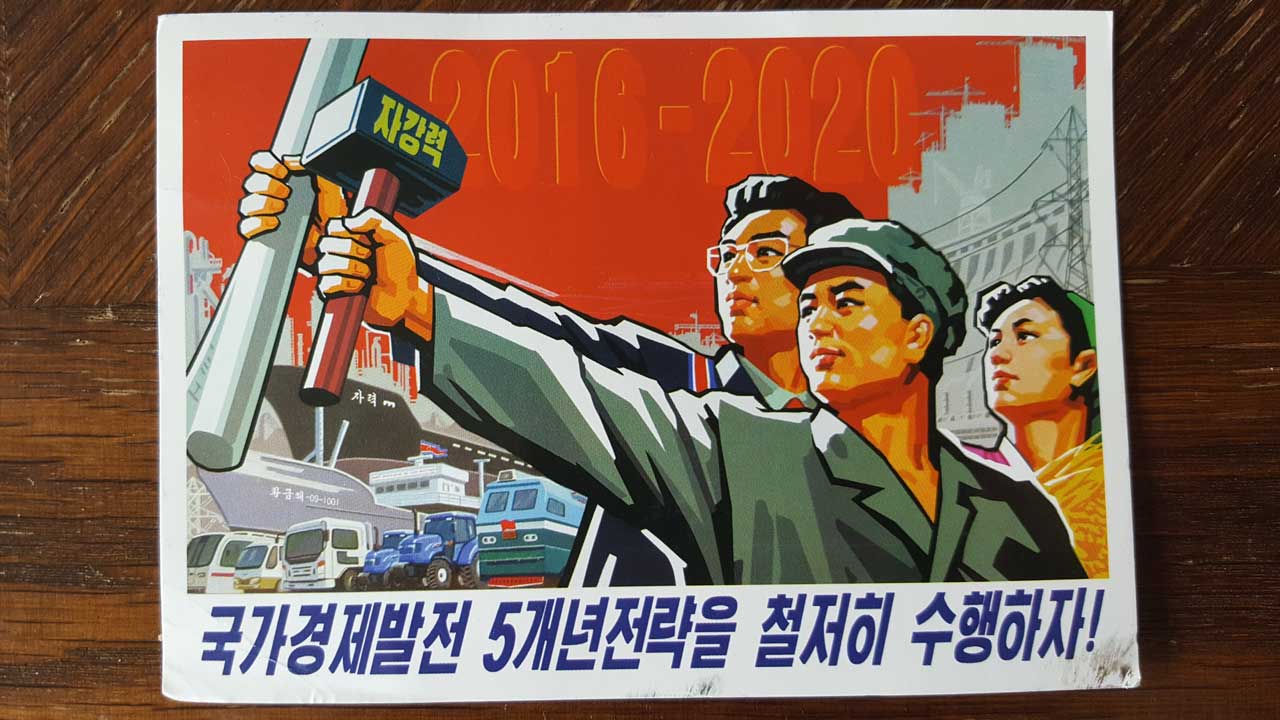
In 2016 the Supreme Leader of North Korea Kim Jong Un announced that he would put forward the first five-year plan since the 1980s. According to news stories in the West, he declared that North Korea should “fly the flag of victory” and become a “scientific and technological, economic and highly civilized power”.
I cannot read Korean, but to me this postcard reveals just what Kim had in mind. Factories, hydro-electric dams, ships, trains, tractors and trucks. The typical posture of the little group of people in front is also revealing, and very common on North Korean propaganda posters. A lady, be it wife or worker, then a blue-collar worker (in reality in military green colour) with a hammer. The third person is the engineer with a roll of plans in his hand – and eyeglasses. They always present intellectuals with glasses just to underline the statement.
In contrast to (other) Communist regimes who tend to kill intellectuals, the North Koreans include them along with the military and workers as essential in promoting the success of the ongoing revolution.
Postcard no. 3: The combination of missiles and residential blocks
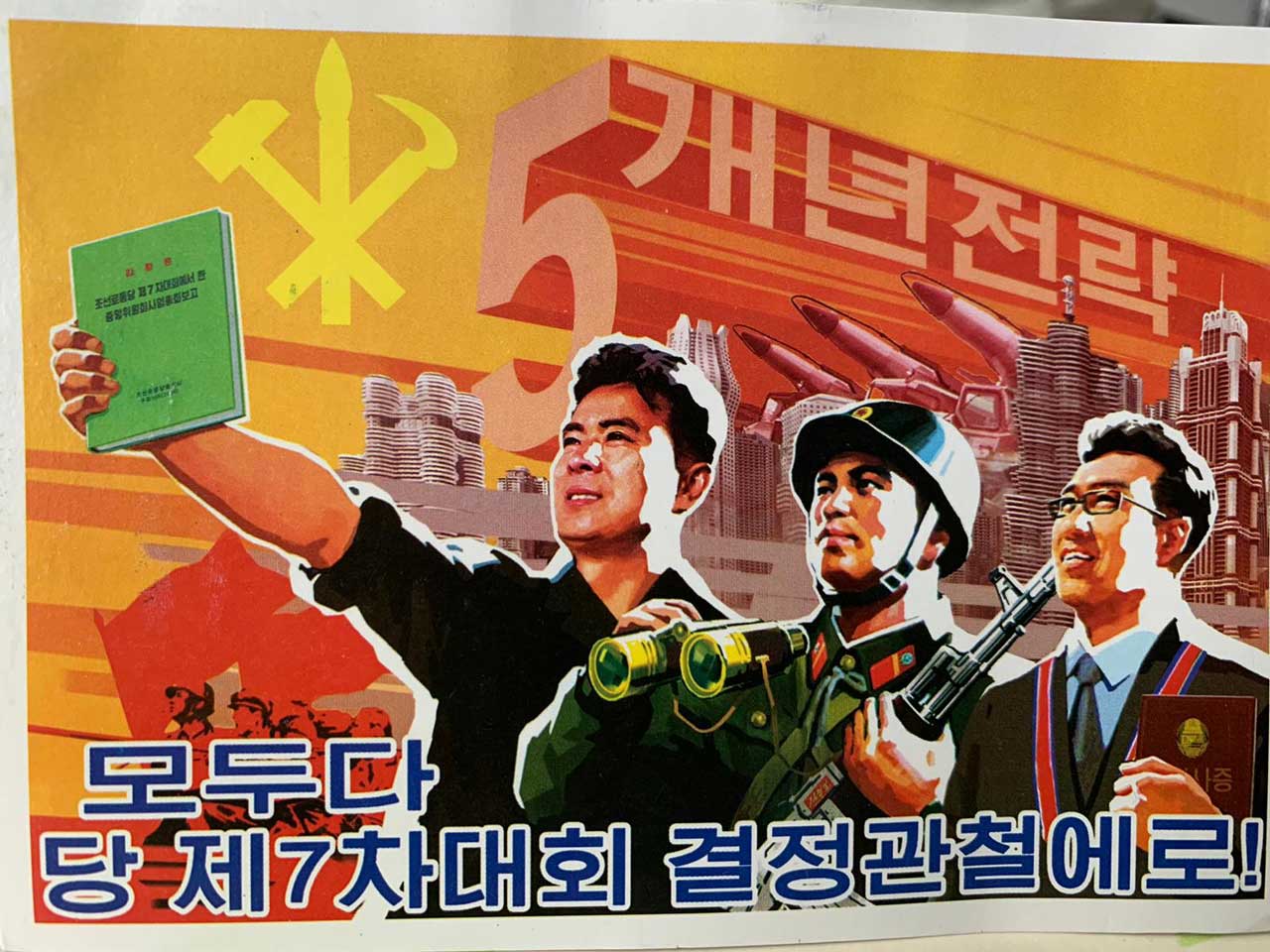
This looks very much like the previous but puts forward a rather surprising combination. The residential blocks, looking very much like some newer ones in Pyongyang, are combined with three large missiles on top. On the bottom left there are advancing troops with red flags. And again, three people: The engineer (or some other professional) on the right, a soldier with a firm grip on his gun, and a civilian. I would guess he is some party figure.
The yellow symbol in the top left corner is that of the Worker’s Party of Korea. It was founded in 1949 and is the ruling party of the Kim dynasty. There are actually two other parties in the country which are allowed to operate. To me this is more like having a response ready for criticism from the West – like in: “Hey, we have democracy, free elections and a multiparty system!” The emblem builds on the traditional Communist hammer (industrial workers) and sickle (farmers). In addition it has an ink brush to symbolise the intelligentsia.
The big number 5 on top might hint to the five-year plan mentioned above, but I do not know what the text on this postcard means.
Roadside billboards
In this final section I include a series of roadside billboards and also a photograph from one of the metro stations in Pyongyang. Like on billboards in other countries, they function as advertisements. The only difference is what they advertise. In this country it is the revolution, nothing else.
Click an image to enlarge it, and then click the arrows to browse between them.
Read all articles from North Korea on Sandalsand.

